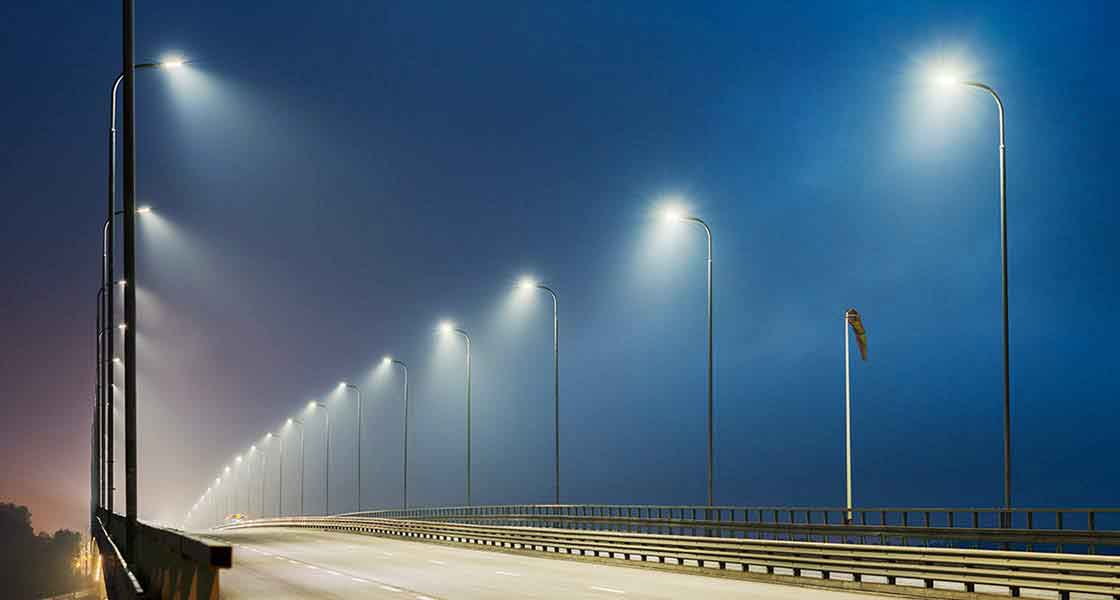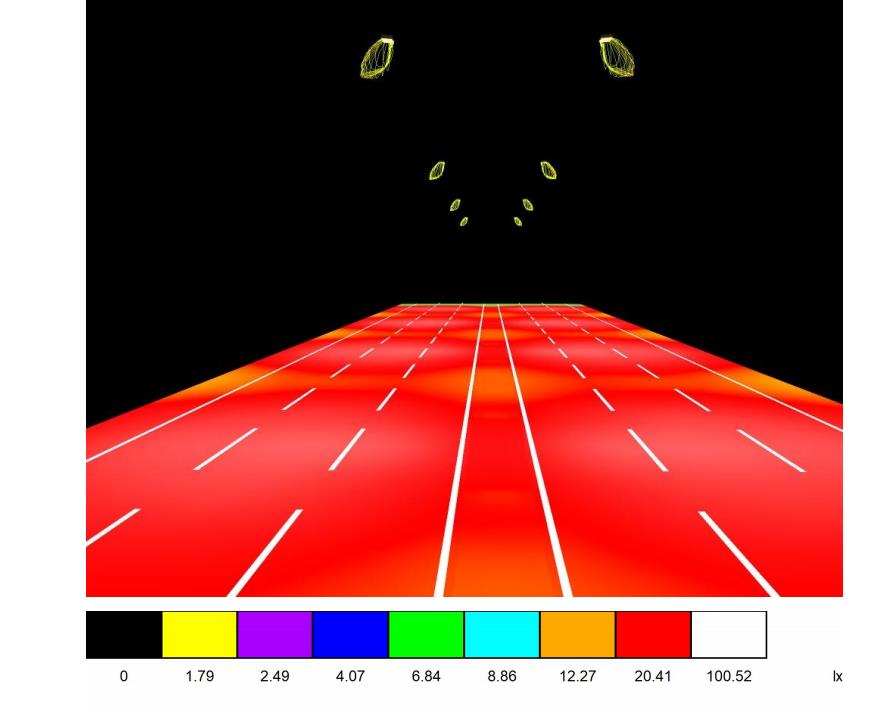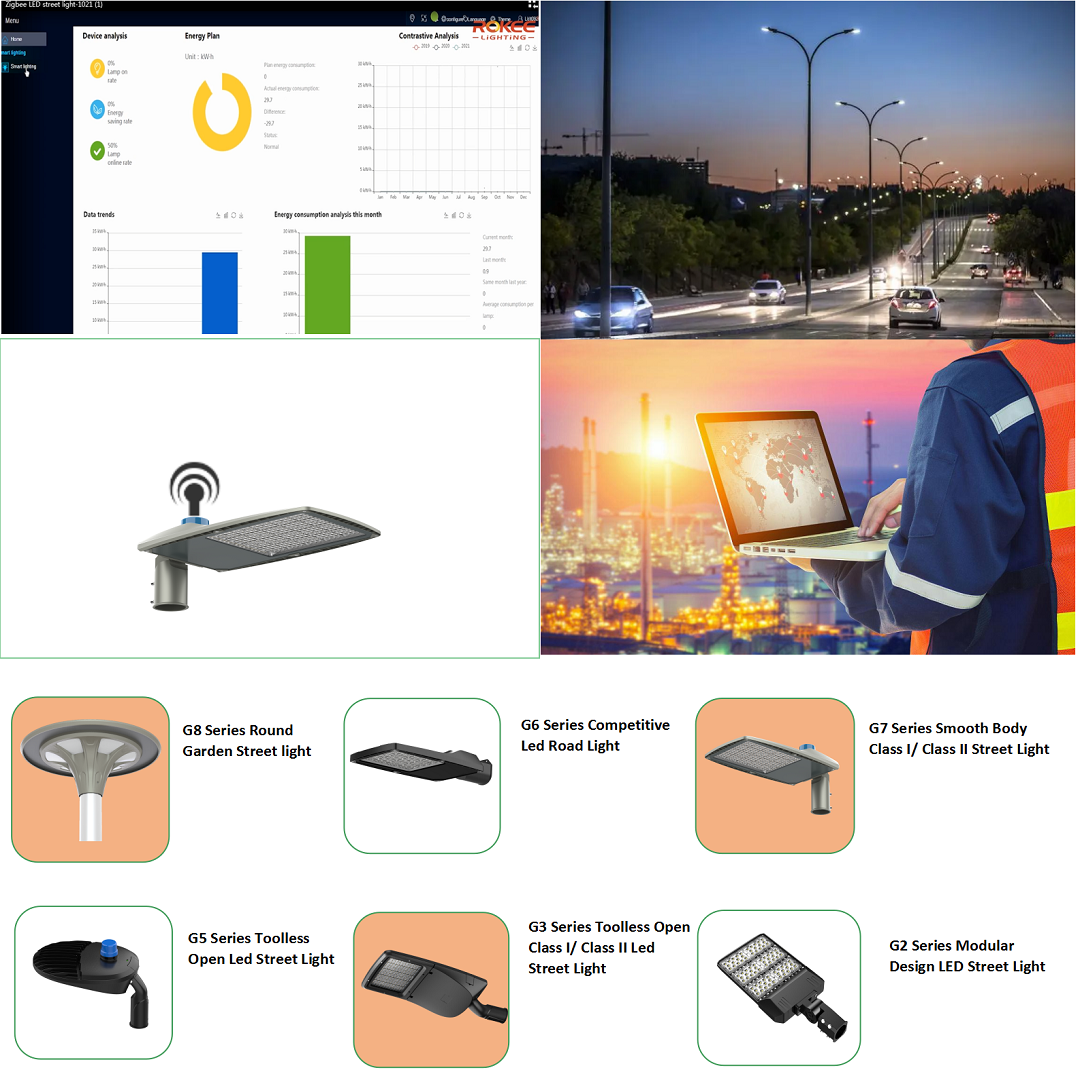The primary purpose of street lighting is to provide the appropriate level of illumination for drivers to ensure safe driving or for pedestrians to ensure safe walking. In cities, street lighting plays an additional role in creating a more attractive and safer environment. The ability of urban street lighting to illuminate objects is affected by the quality of light and other physical factors such as traffic levels and pavement. A good street lighting system will ensure visual detection of objects at greater distances.
What are the main factors we should be looking at?
The evaluation indexes of street lighting include roadway average illuminance Lav (roadway average illuminance, roadway minimum illuminance), luminance uniformity, longitudinal uniformity, glare, ambient ratio SR, color rendering index, and visual entrainment, so these are the points we need to pay attention to when doing street lighting. Street lighting design.
Average Roadway Brightness Lav (in candelas/square meter)
Road brightness is a measure of road visibility. It is the most important factor affecting whether an obstacle can be seen or not, and is based on the principle that illuminating the road is sufficient to see the outline of an obstacle. Luminance (road brightness) depends on the light distribution of the luminaire, the lumen output of the luminaire, the design of the streetlight installation, and the reflective properties of the road surface. The higher the brightness rating, the better the illumination. Depending on the lighting class standard, the Lav is between 0.3 and 2.0 Cd/m2.
Uniformity
Uniformity is a measure of the uniformity of roadway lighting distribution and can be expressed as overall uniformity (U0) and longitudinal uniformity (UI).
Street lighting installations must determine the difference between the minimum permissible luminance and the average luminance of the roadway, i.e., the total luminance uniformity, which is defined as the ratio of the minimum luminance to the average luminance of the roadway. Good total luminance uniformity ensures that all points and objects on the roadway are adequately illuminated and visible to drivers. The Uo value accepted by the road lighting industry is 0.40.

Glare
Glare is the sensation of glare that occurs when the brightness of light exceeds the human eye's level of adaptation to light. Glare causes discomfort and reduces roadway visibility. Glare is measured in terms of Threshold Increment (TI), which is the percentage increase in luminance required to compensate for the effects of glare (i.e., to make the roadway equally visible without glare). The industry standard for glare in street lighting is between 10% and 20%.
Surround Ratio (SR)
The ratio of the average horizontal illuminance in a 5-meter wide area outside the carriageway to the average horizontal illuminance on the adjacent 5-meter wide carriageway. Roadway lighting should illuminate not only the roadway but also the adjacent area so that drivers can see surrounding objects and anticipate possible roadway obstacles (e.g., pedestrians about to step onto the roadway.) SR is the visibility of the roadway perimeter relative to the main roadway itself. According to lighting industry standards, SR should be at least 0.50, as this is desirable and sufficient for proper eye adjustment.
Average roadway illuminance, minimum roadway illuminance, vertical illuminance
The average of illuminance measured or calculated at pre-set points on a roadway according to CIE regulations. Lighting requirements for motorways are generally based on luminance, but lighting requirements for sidewalks are primarily based on roadway illuminance. This depends on the brightness of the light distribution fixtures, the lumen output of the fixtures, and the design of the streetlight installation, but has little to do with the reflective properties of the roadway. Attention also needs to be paid to illuminance uniformity EAV (Lmin/Lav) in sidewalk lighting, which is the ratio of the minimum illuminance to the average illuminance on the roadway. In order to ensure uniformity, the actual value of the average illuminance maintained must not exceed 1.5 times the value indicated for the class.


Color Rendering Index
The Color Rendering Index (CRI) measures the ability of an artificial light source to show or reproduce the color of a road or object on a road relative to a natural light source. Natural light sources (sunlight) have a color rendering index of 100; the higher the index, the better the visibility. A color rendering index of ≥ 70 is recommended for all types of roadway lighting classes.
What standards should your project meet?
There are different standards for driveways and sidewalks. We have included two tables below based on the EN13201 standard to give you a quick overview of the relevant standards. The table below is for freeways and sidewalks respectively. As you can see, it includes Lav (Eav, Emin), U0, UI, TI and SR requirements. Of course, there are other lighting classes besides M and P. For example, Lighting Class C applies to conflicts. Lighting class C, for example, applies to conflict zones. Often, projects or tenders require protection classes for luminaires.
Roadway Lighting Standard Table
Highway Lighting Level Standard Table

Pedestrian Lighting Level Criteria Table

The main function of public lighting is to ensure the safety of road users and enhance urban safety. Public lighting facilities should be designed to provide proper illumination in an energy efficient and environmentally friendly manner. If you have a project in hand, you may want to start a lighting simulation now to select the right LED streetlights for your project. Of course, if you need our help, ROKEE's team of professional engineers will be happy to assist you with your street lighting design. Contact us: rokee@rokeelighting.net
